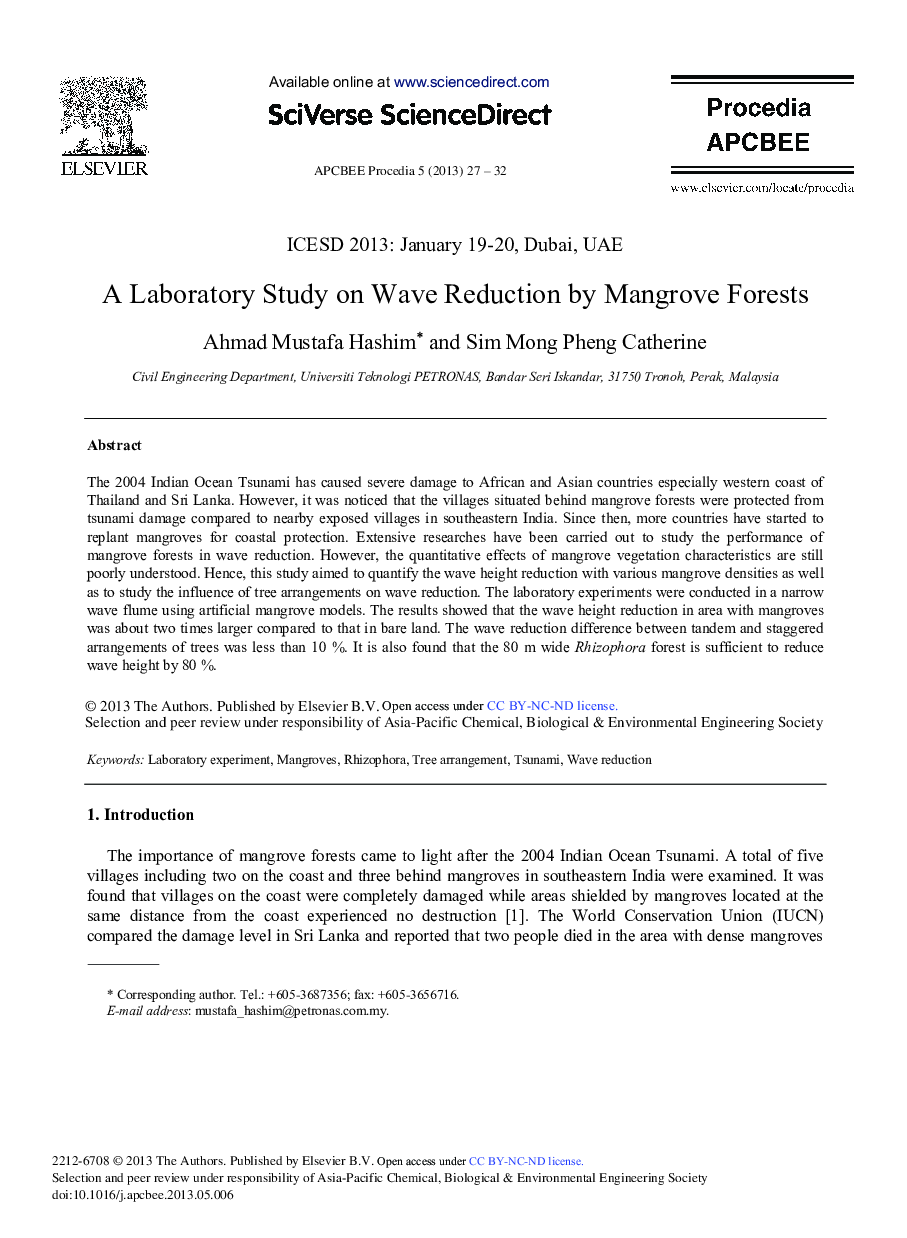| کد مقاله | کد نشریه | سال انتشار | مقاله انگلیسی | نسخه تمام متن |
|---|---|---|---|---|
| 676558 | 1459741 | 2013 | 6 صفحه PDF | دانلود رایگان |

The 2004 Indian Ocean Tsunami has caused severe damage to African and Asian countries especially western coast of Thailand and Sri Lanka. However, it was noticed that the villages situated behind mangrove forests were protected from tsunami damage compared to nearby exposed villages in southeastern India. Since then, more countries have started to replant mangroves for coastal protection. Extensive researches have been carried out to study the performance of mangrove forests in wave reduction. However, the quantitative effects of mangrove vegetation characteristics are still poorly understood. Hence, this study aimed to quantify the wave height reduction with various mangrove densities as well as to study the influence of tree arrangements on wave reduction. The laboratory experiments were conducted in a narrow wave flume using artificial mangrove models. The results showed that the wave height reduction in area with mangroves was about two times larger compared to that in bare land. The wave reduction difference between tandem and staggered arrangements of trees was less than 10%. It is also found that the 80 m wide Rhizophora forest is sufficient to reduce wave height by 80%.
Journal: APCBEE Procedia - Volume 5, 2013, Pages 27-32